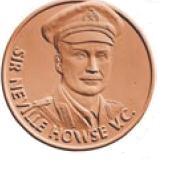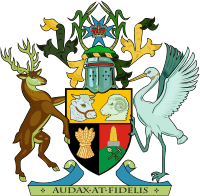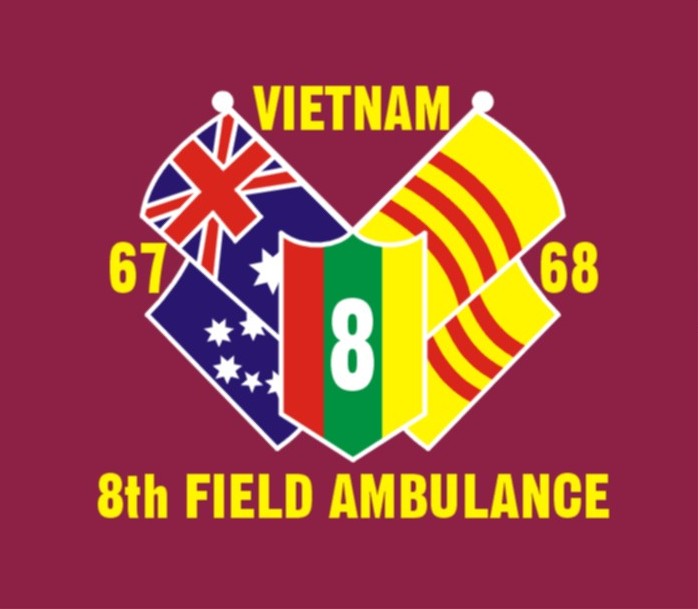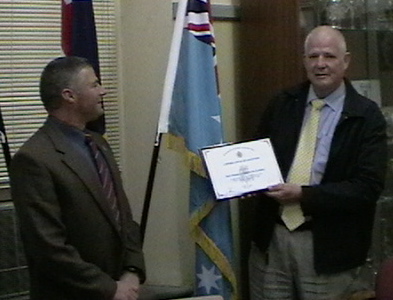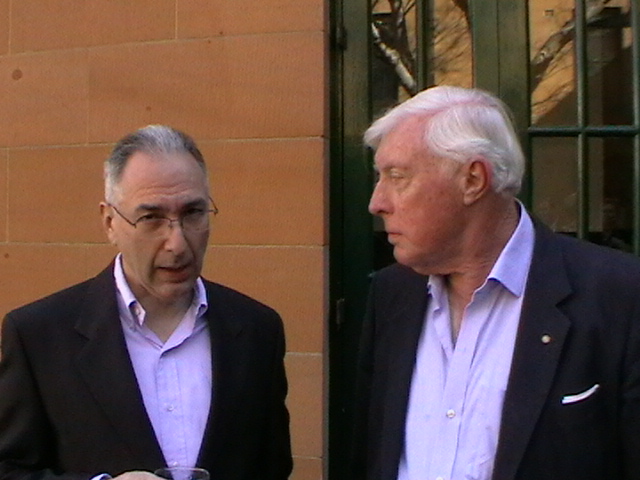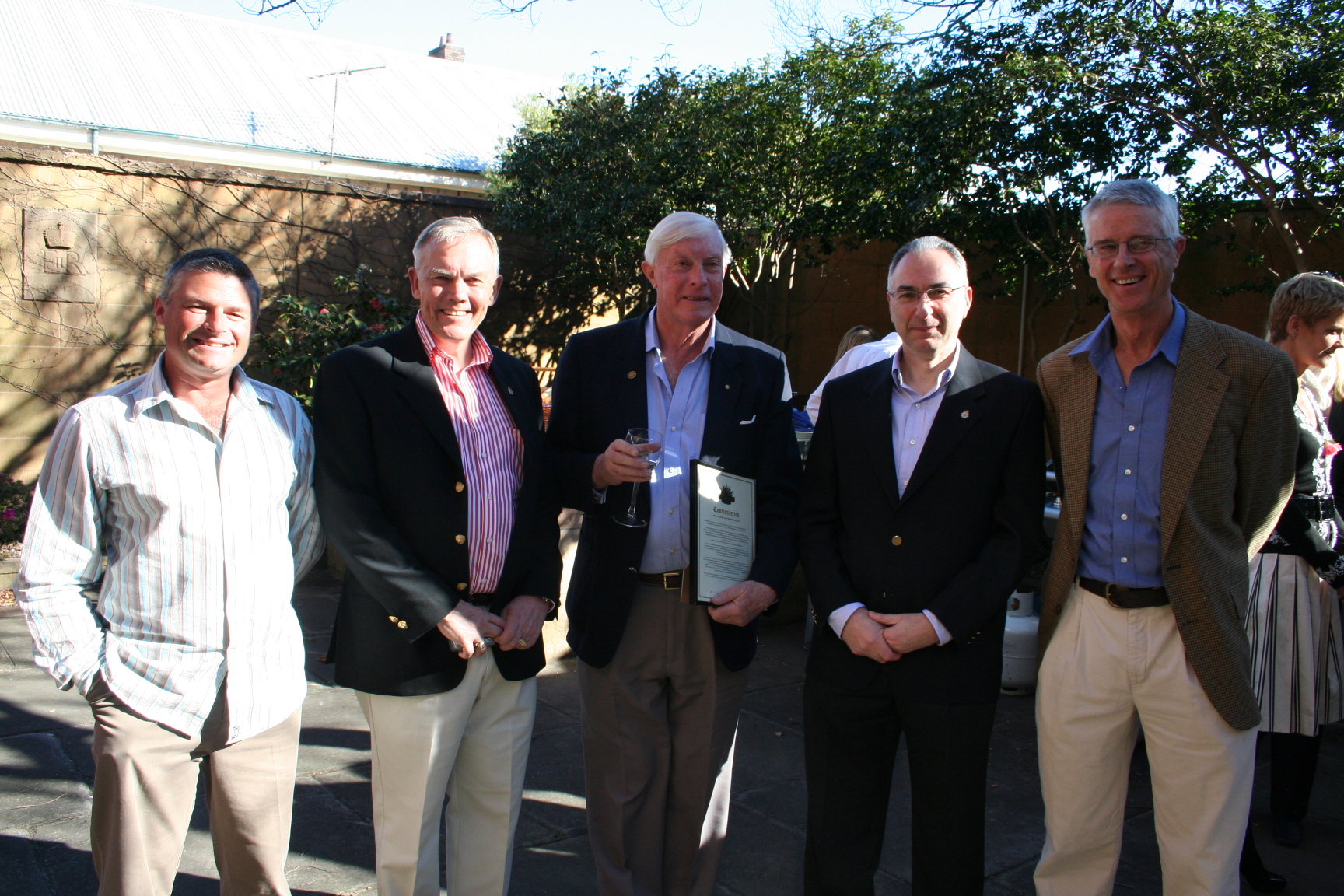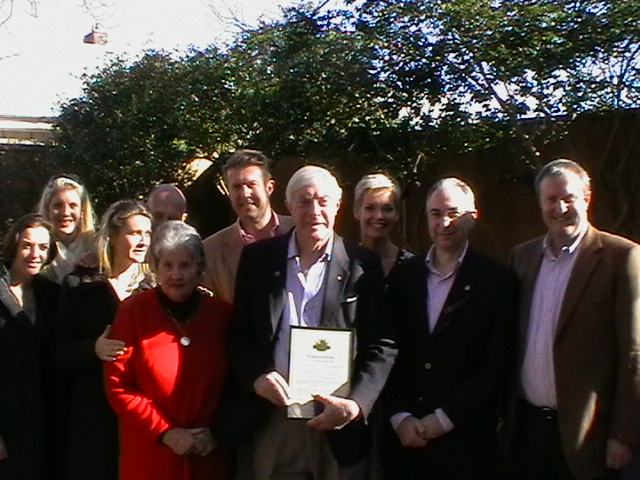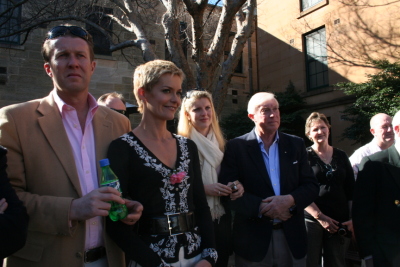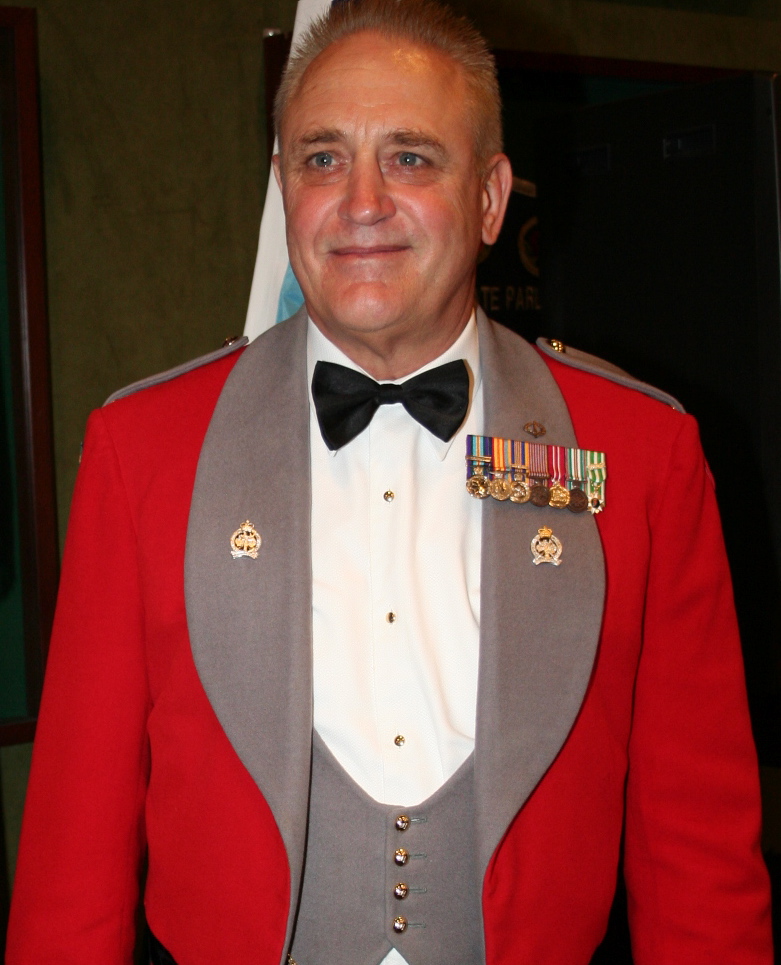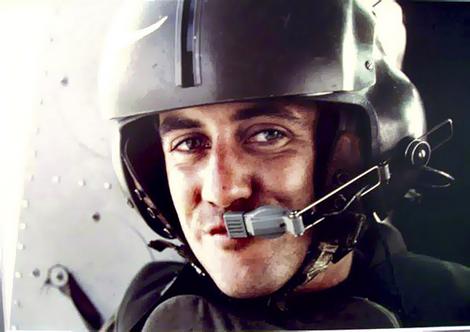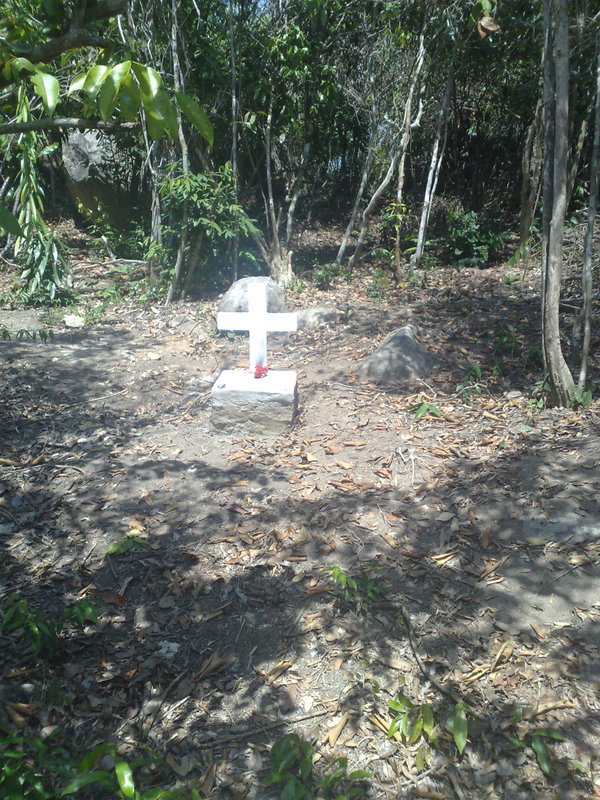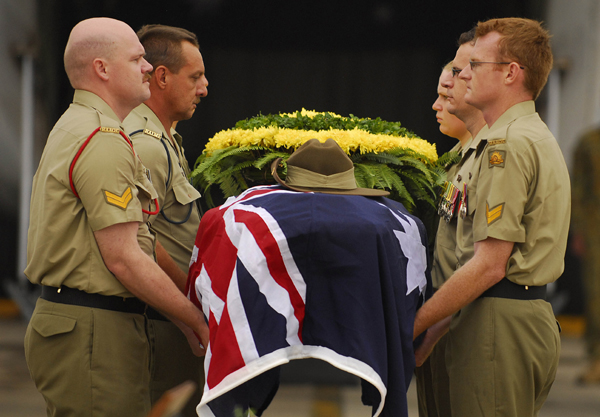NEWS ARCHIVE
|
RAAMC News and Events |
FAMILY AND FRIENDS SAY GOODBYE There was standing room only as family and friends gathered to say farewell to a 34 year veteran and member of the RAAMC, Robert (Bob) Symes. The Vice President of the Sailsbury RSL, was laid to rest in both a moving and at times jovial ceremony conducted at the Salisbury RSL. A number of speakers delivered their accounts of the former serving soldier, father, loved one and a well respected member of the Salisbury RSL. Major John Smith travelled from Brisbane to deliver his account of both a fine soldier and good friend. There was also a large number of the Salisbury Sub Branch, where Bob spent a great deal of his time, working tiresly for those who needed a helping hand. He was instramental in educating the broader community in aspects of Veterans health, the history and traditions of the RSL and ANZAC Day. Before his passing, Bob was due to accept the presidency of the Salisbury Sub Branch. The final tribute was delivered by his daughter Michelle and son- in- law Justin. Michelle spoke of her love for Bob as both a great family man and a sadly missed Grandpa to Dylan and Jayde. In a final tribute, those attending formed a Guard of Honor as the coffin was carried to the waiting car to the sounds of “I did it my way.” Robert (Bob) Symes, 11-10-1944-28-1-2009 Webmasters note: John Smith, Shorty Langford and I have known Bob in excess of 40 Years. Bob was what the RAAMC was and is all about. He was an infantry medic and later as a consequence of war caused disabilities transferred to the Q Stream and subsequently became the RQMS and QM of the 1st Field Hospital. He was a professional soldier who looked after those in his charge. He was passionate about the RAAMC and in his retirement was active and participated in its activities. He never sought recognition or or adulation. He was a soldiers soldier. Good Bye Bob. |
Trooper Donaldson was awarded the Victoria Cross for acts of bravery in Afghanistan. His actions ensured the safety of his comrades, and saved the life of a coalition force interpreter. Tradition holds that even the most senior military officers salute a Victoria Cross recipient, as a sign of respect for their act of gallantry. Air Chief Marshal Houston said it would be his honour to salute Trooper Donaldson. Click here to view Trooper Donaldson VC Citation and here to read his biography. |
|
Planning has commenced to commemorate the 40th Anniversary of the Battle of Binh Ba in Canberra over the period 5 - 7 June 2009. A committee has been established and is liaising with the Department of Veterans' Affairs to finalise the program. Any RAAMC personnel who participated in the Battle or supported it and wishing to participate in the celebrations are welcome. Click here to contact LTCOL Barry Morgan (retd). LTCOL Morgan is a former Commanding Officer of the School of Army Health Portsea and a member of the 5 RAR Battle of Binh Ba Organizing Committee.
RMO 5 RAR, CAPT Hugh Robertson (left), attends to a wounded Viet Cong on the battlefield after the battle of Binh Ba. The identity of the medic assisting is unknown. If anyone can identify him, please click here.
|
MAJOR DOUGLAS FRASER REID MC
The battle group deployed first on Op Palk Wahel in the Upper Geresk Valley between 18 Sep 07 and 03 Oct 07. Following his own firm advice, Reid was assigned to which ever of the companies it was assessed faced the highest risk of casualties. He infiltrated with C Company into enemy held territory by foot under cover of darkness and was soon engaged with intense fire from a number of directions. The ensuing fire-fight endured for over an hour and two casualties were sustained. At considerable personal risk, Reid advanced under enemy fire, treated the casualties and organised their extraction. For the majority of those with Reid, this was their first experience of close combat. His bravery and personal example were an inspiration to all and he was undoubtedly a major contributing factor in the successful outcome of the battle. Following the operation in Helmand, Reid accompanied the fire support group on a road move to Kandahar. Soon after first light on 4 Oct 07, the vehicle in which Reid was travelling was struck by an improvised explosive device. The gunner and driver were thrown out of the vehicle and the company commander was killed instantly. Despite the severe physical and mental shock, Reid forced his way out of the destroyed vehicle and, in open ground and in full view of potential enemy firing points, treated the casualties. The enemy attempted a secondary attack during which Reid’s attention to the casualties was unstinting. Once again Reid’s actions had proved to be decisive. Over an exacting period of 3 to 4 hours, he overcame the personal physical trauma to conduct his professional duty and establish control of a serious and dangerous situation following the loss of the company commander. Between 20 Oct 07 and 15 Nov 07, Reid was on the ground again on Op Spin Ghar, the clearance of an enemy stronghold in the Baluchi Valley. Reid inserted by helicopter with the lead company right on the edge of the objective. Once engaged by the enemy, fighting was hard and close quarter. Both lead platoons and the Australian SAS came under simultaneous heavy contact from multiple firing points, resulting in two casualties. Reid stabilised the first, a C Company soldier, and without hesitation, dashed across open ground under withering fire to begin treatment of the mortally wounded Australian casualty. The situation was perilous with the Australian SAS running low on ammunition and the enemy pressing home an attack. Reid was forced to administer treatment in full view of this emboldened enemy. With almost no regard for his own safety, he frequently exposed himself to enemy fire in order to access medical equipment. As the intensity of the enemy attack increased, Reid continued to work on the casualty, assisting in physically pulling him back from enemy killing zones when necessary, despite great personal risk. The Australian SAS commander described Reid’s role as “the significant turning point in the battle” Reid demonstrated exceptional qualities of courage, organisational powers and practical example in the face of hostile enemy action. During the tour, he saved the lives of many local Afghans, their security forces, Coalition and British troops. His gallantry was inspirational and contributed to the overall enduring fighting spirit of the battle group. This exemplary service, far beyond the call of duty, deserves the very highest official recognition. |
|
A collaboration between the webmasters of the RAMC and RAAMC Association is progressing to establish an Exercise LONG LOOK link on both sites. If you have any stories or photos or your experience please forward them to the webmaster.
|
|
The future of Army Health and the impact of the Reserve was discussed at a conference conducted at Victoria Barracks Paddington. The Conference was let by the Director General Health Reserves - Army BRIG Daryl Duncan. Members from all Army Health Corps were in attendance. It is anticipated that this conference will be repeated in all States. Click here to view the above movie in QuickTime The focus of the meeting was to look at issues around the generation of health capability for Army from the Army Reserve |
Lt Michael Fussell Memorial Service
Family, friends and colleagues gathered together at Holsworthy Barracks today, to pay their respects to Lieutenant Michael Fussell, who lost his life to an Improvised Explosive Device in Afghanistan on the 27th November 2008. Family and fellow Officers spoke to the gathering and reflected on the young Lieutenants career with the Army, in particular his service with the Royal Regiment Australian Artillery and 4th Battalion, Royal Australian Regiment (Commando) (4RAR). A Catafalque party took position around 4 RAR’s memorial, known as “the Rock”, before Lieutenant Fussell’s name was unveiled, and officially added him to the list recognizing those members of the battalion, who had made the supreme sacrifice in battle. The service was concluded with the sounding of the Last Post, before the family was presented with the Australian Flag that draped the young Officer’s casket on the trip back to Australia, and a slouch hat, the eternal symbol of the Australian soldier. |
Lieutenant Michael Fussell Lest We Forget Lieutenant Michael Fussell, who was killed by an improvised explosive device detonation in Afghanistan on Thursday 27 November, began his return to Australia today following a memorial service and ramp ceremony at Camp Holland, the Australian and Dutch military base in Tarin Kowt, southern Afghanistan. Click here to view the above video in QuickTime. |
Stepping Up: Part-Time Forces and ADF CapacityIn the past decade, armed forces around the Western world have found themselves supporting deployments that have endured for years. Read Andrew Davies and Hugh Smith's article recently published in the Australian Strategic Policy Institute. Click here to download the full article. |
ANZAC DAY 2009 New South WalesClick here to read some important changes to the ANZAC Day 2009 arrangements in Sydney. |
1ST AUSTRALIAN FIELD HOSPITAL'S 40th AnniversaryThe 1st Australian Field Hospital marked it's 40th Anniversary with a parade at Victoria Barracks Sydney on 28 November 2008. The Reviewing Officer was MAJ Don Chapman CSC, the President of the 1st Australian Field Hospital Association. The 1st Australian Field Hospital was born in Vietnam in 1968 at the height of the Vietnam War.
Click here if you wish to view the Quicktime Movie |
NSW Military Health Symposium 2008
|
|
Back to Top
|
|
The Trustees of the RAAMC Assn are proud to announce the appointment of Major Trevor Carter as the Association's Honorary Legal Officer. Major Carter is a serving member of the of the Australian Army Legal Corps with many years service in the Army including active service in South Vietnam where he served with 5 RAR as a Platoon Medic and Stretcher Bearer. Major Carter currently serves at Victoria Barracks in Paddington as a Legal Officer. Back to Top |
|
The remains of Lance Corporal (LCPL) John Gillespie, a Medical Assistant, formerly of 8th Field Ambulance, were repatriated from Hanoi to Australia today. LCPL Gillespie was killed when the 9th Squadron, Royal Australian Air Force (RAAF) UH1H (Huey) helicopter he was traveling in was shot down over South Vietnam on 17 April 1971. The helicopter was tasked to evacuate a wounded South Vietnamese soldier in the vicinity of the Long Hai hills near Vung Tau, South Vietnam. On impact, the helicopter caught fire. LCPL Gillespie was trapped in the wreckage of the helicopter and could not be rescued because of the ferocity of the fire. Due to the intensity of the fighting, the remains of LCPL Gillespie could not be recovered. In recent times, a group of former servicemen formed an organisation, Operations Aussies Home (OAH), dedicated to finding and repatriating the remains of the six Australian Servicemen left in South Vietnam after Australia withdrew from the country. So far, OAH, in conjunction with the Australian Army, has identified and repatriated three of the missing servicemen. Back to Top
Photo by courtesy of the Australian Defence Force
|


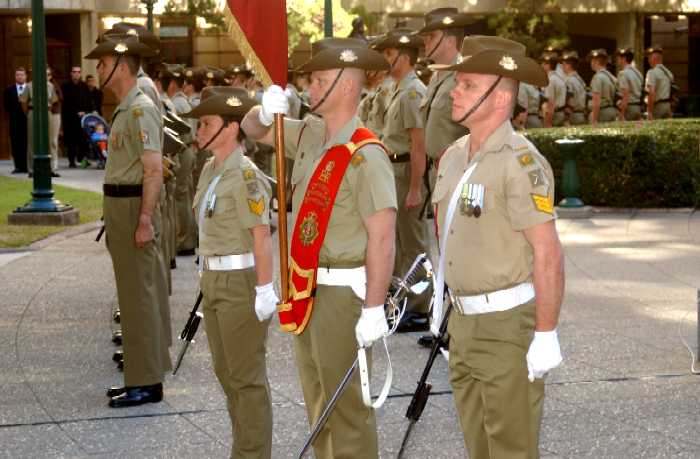


 Trooper Mark Donaldson was awarded Australia’s highest military honour – the Victoria Cross. The Chief of the Defence Force, Air Chief Marshal Angus Houston, saluted the Trooper as the first Australian in almost forty years to be presented the Victoria Cross.
Trooper Mark Donaldson was awarded Australia’s highest military honour – the Victoria Cross. The Chief of the Defence Force, Air Chief Marshal Angus Houston, saluted the Trooper as the first Australian in almost forty years to be presented the Victoria Cross.

 Major Douglas Fraser Reid was the 1st Battalion, The Royal Gurkha Rifles Battle (1RGR) Group Regimental Medical Officer during Op Herrick 7. 1RGR was committed to the role of Regional Battlegroup (South) (RGB(S)), which required it to conduct operations throughout Southern Afghanistan. Reid consistently and repeatedly distinguished himself by his courage and leadership in the most dangerous of situations.
Major Douglas Fraser Reid was the 1st Battalion, The Royal Gurkha Rifles Battle (1RGR) Group Regimental Medical Officer during Op Herrick 7. 1RGR was committed to the role of Regional Battlegroup (South) (RGB(S)), which required it to conduct operations throughout Southern Afghanistan. Reid consistently and repeatedly distinguished himself by his courage and leadership in the most dangerous of situations.


